As our team enjoys a well-deserved winter break, I find myself reflecting on the hard work we have done this year, how far we’ve come since the beginning of the Chesapeake Bay Landscape Professional program (CBLP), and the changes coming in the upcoming year.
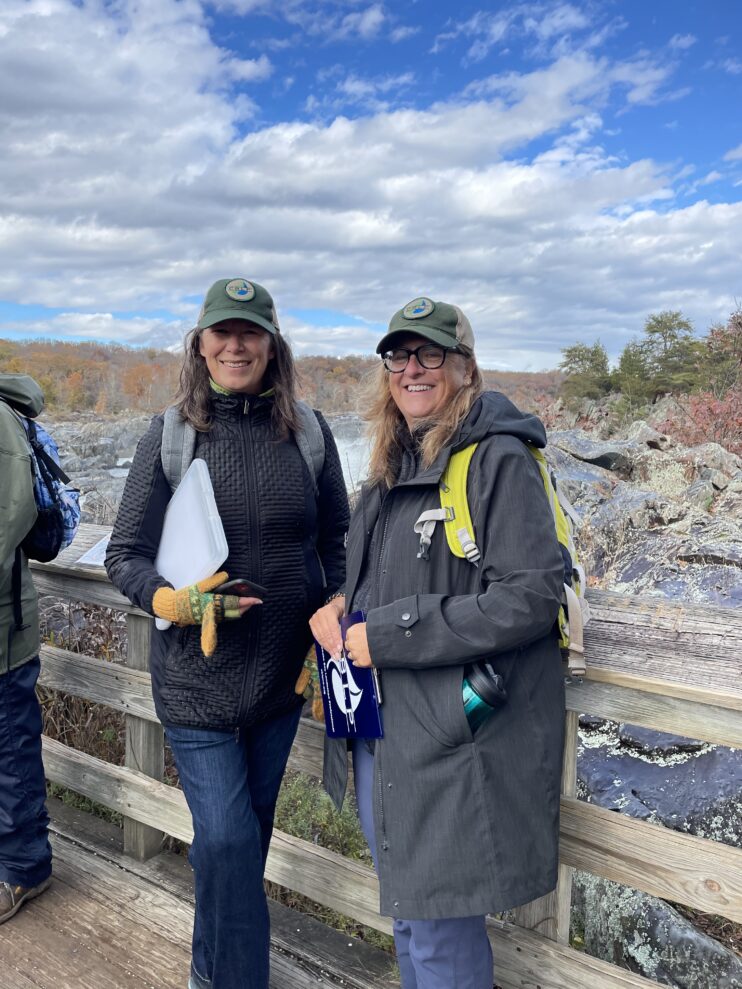
Shereen and Beth at a CBLP Level 2 class
When I interviewed to lead the program, Shereen Hughes introduced me to the concept of collective impact, which quickly resonated with me. This model—focusing on a centralized structure, shared goals, and collaboration—became the foundation of our program.
When I was hired in the spring of 2015, Shereen and I set about, hand-in-hand, to build a regional training program which would meet the needs of Bay region stakeholders from various sectors using this approach. We spent countless hours on the phone, in emails, and in person, planning every detail.
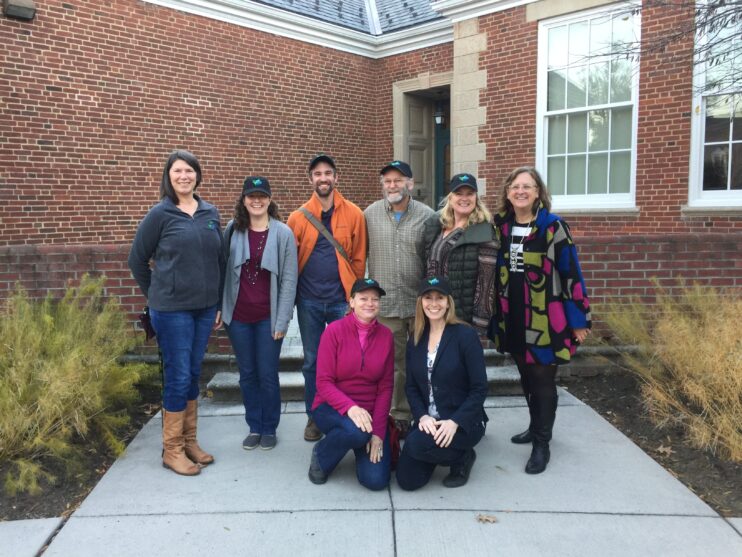
The original, cohort of CBLP Instructors
With members of CCLC’s Training and Standards committee and other regional experts, we formed the CBLP Steering Committee to guide the process. Shereen seemed to know everyone and had already begun spreading the word about the planned training effort- and we continued that work reaching out to stakeholders across sectors.
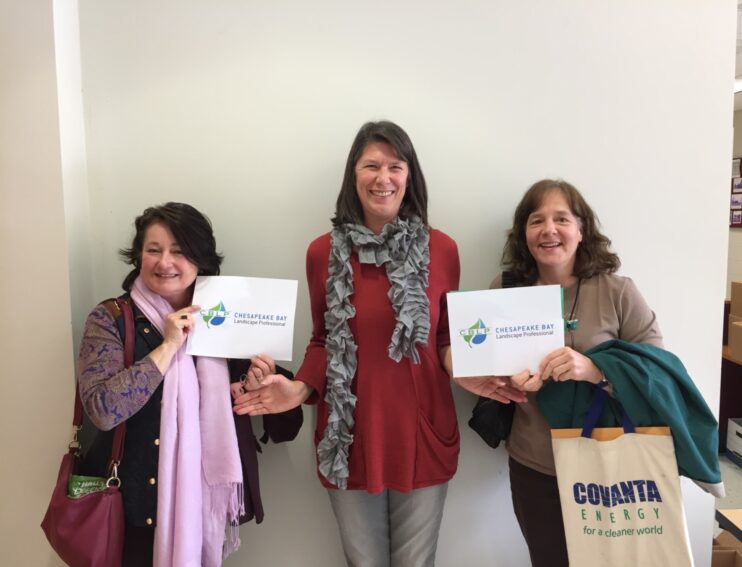
Shereen, with Virginia Rockwell and Carol Heiser after they took their Level 1 exam, Dec 2016
Open forum meetings, and regional technical advisors ensured that CBLP would reflect the needs of the landscaping community and others across the Chesapeake Bay region. Shereen describes our approach of inviting stakeholders to participate in the process as CBLP’s “secret sauce.” It was not necessarily easy, but it has served CBLP very well.
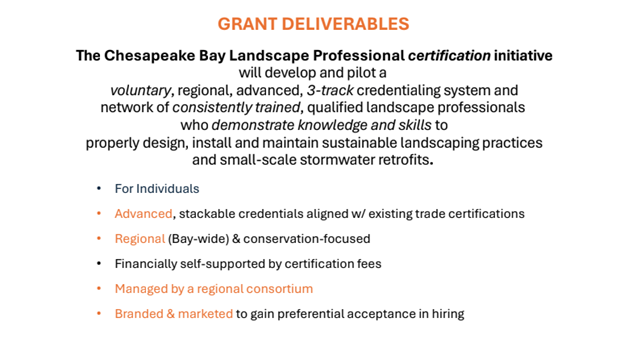
At the outset, there were to be three separate CBLP training tracks, focused on design, installation, and maintenance. Some people thought we shouldn’t have landscape architects and landscape technicians in the same classroom. But, believing that we too often end up in silos, and that much can be achieved from collaborative learning, Shereen and I pushed to bring everyone together in the same room. Our goal was for everyone to learn together, and hopefully, in the process, to make meaningful connections that would benefit their own work.
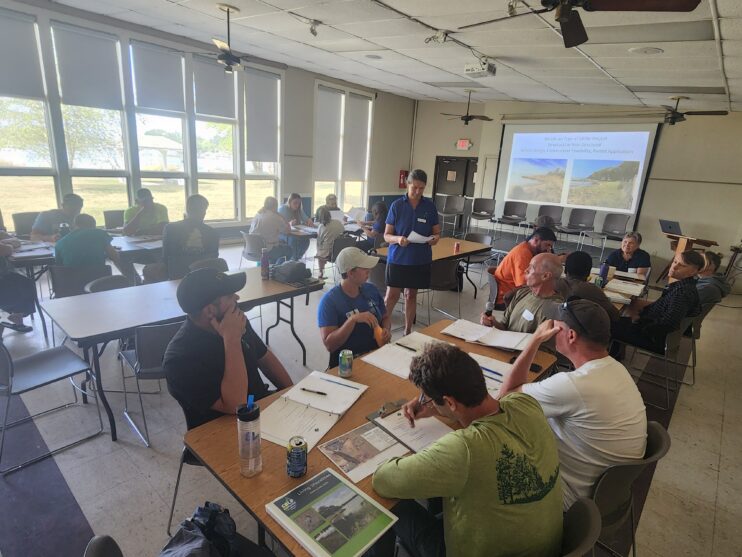
Shereen leading an exercise during the newest CBLP imitative- CBLP-Shorelines
This approach to inclusivity—inviting everyone to the table and considering their needs—was key to CBLP’s success. We pushed for a collaborative training model, combining landscape architects and technicians in the same room with educators and government and watershed nonprofit staff to foster cross-sector learning and connections. This decision continues to influence every course we teach.
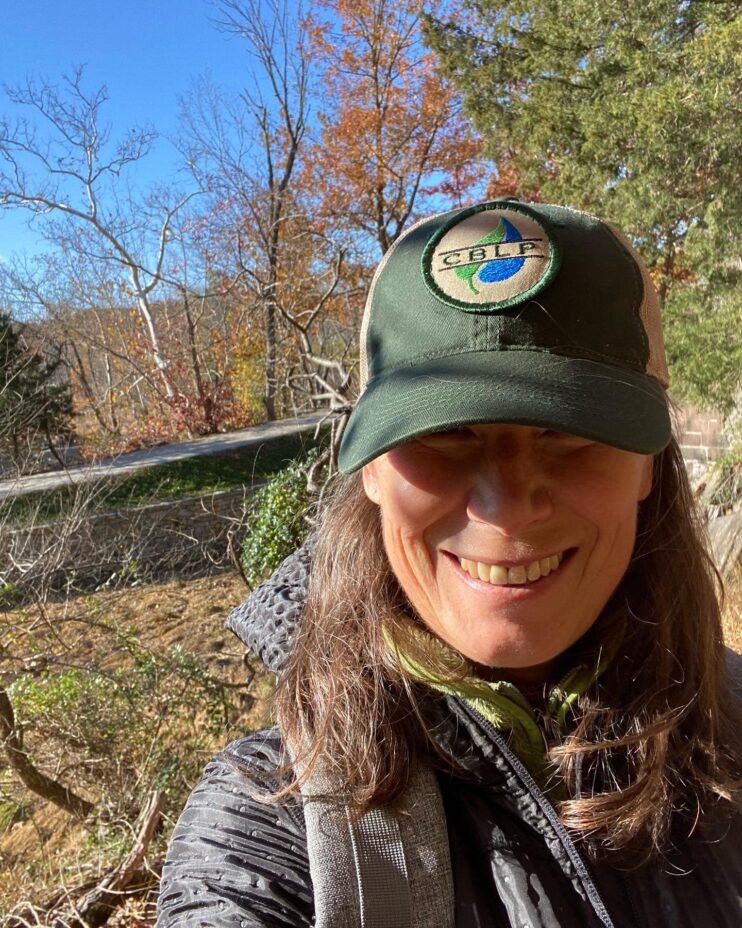
In 2025 Shereen will begin her next adventure of semi-retirement. She will be stepping down from her position as CBLP Virginia Coordinator and will assume a new role as Ambassador for both the CBLP program and for Wetlands Watch.
I am so excited for Shereen to have more time for her family, spending time at her cottage on the Potomac River, reading, and traveling. I am personally and professionally deeply grateful for the time and wisdom that Shereen has shared with me and with the CBLP program, and we are delighted that she will stay connected with the program after a long vacation in early 2025.
Thank you, Shereen, for everything, and most especially for cooking up that secret sauce.

Beth Ginter is the first Executive Director of the Chesapeake Conservation Landscaping Council. Additionally, she oversees the Chesapeake Bay Landscape Professional (CBLP) program, a certification effort which provides consistent training and practice standards for landscape professionals working in the Chesapeake Bay region, Ms. Ginter has a Masters degree in Sustainable Landscape Design from The George Washington University. Her limited free time is spent with her family, walking her two corgis, and catching up on her reading.



